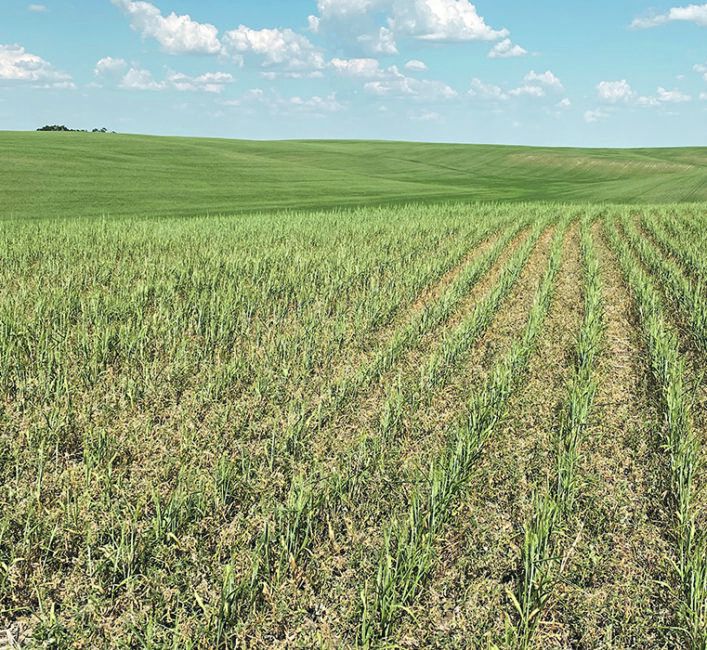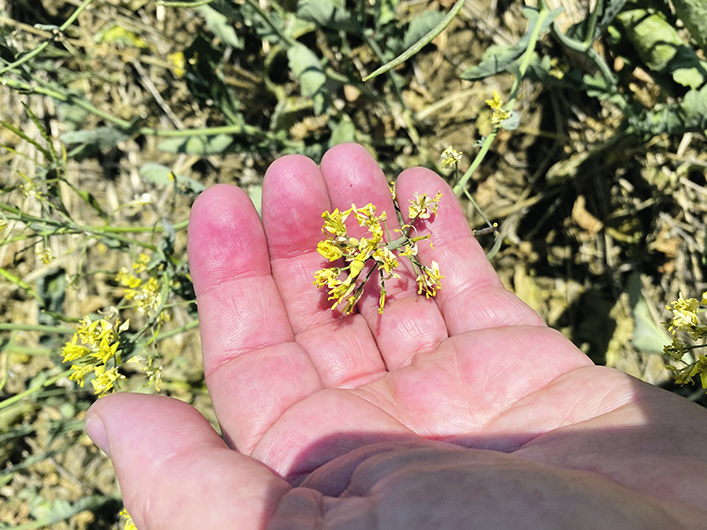Writing on the wall for prairie crops

Crunch, crunch, crunch — that is the sound of parched prairie crops burning to a crisp under an intense summer heat wave that continued to bake western Canadian crops this week.
It might also describe the financial situation that some farmers will face this year as yield and income prospects dwindle quickly and the full impact of a looming feed shortage comes into greater focus for cattle producers.
Across the West, grain and oilseed producers are anticipating an early and light harvest this year, with crops in many areas already well past the point where they would benefit from a rain.
In large areas of western and southern Saskatchewan, yields will be well below normal — and in some cases close to zero. For some, canola crops are a complete write-off and annual cereals will be coming off before the end of the month with yield estimates in the five to 10 bushel range.
In the hardest hit areas, grain growers are already beginning to salvage annual crops for animal feed. Crop development is estimated at two to three weeks ahead of normal as drought-stressed plants race toward the finish line.
Even in the Parkland areas of Saskatchewan and Alberta — where moisture reserves entering the growing season were considerably better — crops are going backward quickly, say farmers and agronomists.
Livestock producers, meanwhile, are scrutinizing animal numbers and keeping a close eye on markets, wondering when to begin culling their herds before feeding season arrives.
“It’s very, very dry out there,” said provincial crop specialist Shannon Friesen with Saskatchewan Agriculture.
“This is one of the driest summers that we’ve seen in a very long time.
“We’ve also had some very strong winds and the lack of moisture right across the province has really caused a lot of issues for us.
“In some areas, any rain that we do get at this point is not going to actually benefit any of (this year’s) crops but it would of course help to replenish that topsoil moisture and help our hay and pastures.”
In its most recent weekly crop report, distributed July 8, Saskatchewan Agriculture rated topsoil moisture conditions as either short or very short on more than eight out of every 10 acres of cropland in the province.
That number is expected to be even higher when the province releases its next report on July 15.
Friesen said some areas of the province received thunder showers that will improve conditions.
But for this year’s crop, the writing is on the wall.
“We’ve seen a few showers here and there … but nothing really substantial enough to bring us back into an adequate moisture situation.”
Friesen said it’s too early to get a read on how small the province’s grain harvest will be, but yields will be disappointing and grain quality will be impacted, she said.
“We just cannot have such a long period of time with no moisture and temperatures in the 30s and 40s… and expect things to still be in decent shape.”
In west-central Saskatchewan, among the province’s hardest hit areas, agronomy manager Lloyd Coben with G-Mac’s Ag Team in Elrose said wheat and barley yields in much of his trading area will be in the five- to 10-bu.-per-acre range. Canola yields will be lucky to hit double digits.
“We’ll be well below average — well, well, well below,” Cohen said.
“We’re burning up pretty bad here. Some of the crops might be grazing only. A lot of the cereals are heading out at six inches and the canola is really suffering.
“The pulses look better than anything but they’re not going to be much of a crop either.”
Coben said grain will be extremely scarce across most of west-central Saskatchewan this year.
Bin space and unused desiccants will be in ample supply.
“If we have any crop in this area that makes 20 (bu. per acre), I’d be awfully surprised,” he said.
“This year’s pretty much a write-off…. This would rate right up there with one of the worst we’ve ever seen.”
Source: producer.com


